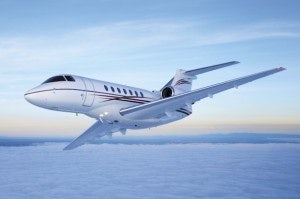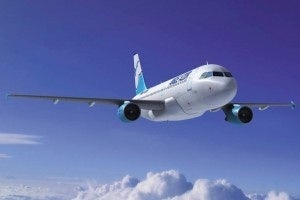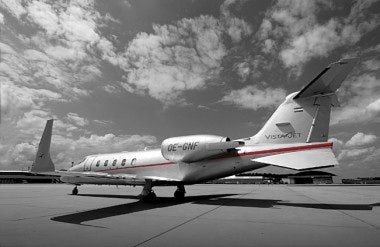"More Patience May Well Be Called For" In China's Business Aviation Market#

This year’s Asian Business Aviation Conference & Exhibition (ABACE), which will take place at Shanghai Hongqiao International Airport from April 16 to 18, will once again bring together numerous parties who are hopeful that the business aviation market in this vast, fast-growing country will open up and boom. The event is a joint venture among NBAA, the Asian Business Aviation Association (AsBAA), Shanghai Exhibition Center and the Shanghai Airport Authority.
One key question at this year’s ABACE show will be what progress has been made since last year’s show in convincing Chinese authorities to give civil aviation more freedom to operate. Participants may also want to consider the extent to which ABACE is evolving into an event reflecting the wider interests of business aviation throughout Asia, as opposed to having a laser focus purely on China.
The 2012 ABACE–a rebirth of the show that had run a few years before but disappeared (after the 2008 event in Hong Kong)–was generally regarded as a worthwhile event, and the organizers wasted no time in announcing that it would take place at the same venue every year for the next four years.
The show’s home, the Shanghai Hawker Pacific FBO facility, proved an ideal starting point, if likely to strain a little should exhibitor numbers grow significantly. However, a temporary pavilion outside showed that expansion is possible.
The 2012 event attracted 156 exhibitors, 6,375 visitors and 27 aircraft to the static park. As of press time, the exhibitor count for ABACE 2013 stood at 108, but early industry interest in this year’s show would suggest that it is likely at least to mature the stature of the last one. All the major business aircraft manufacturers are signed up for ABACE, along with many Western equipment makers and service providers and a number of Chinese firms too.

Keynote speaker at this year’s opening session will be ICAO Council president Roberto Kobeh González. In accepting NBAA’s invitation, Kobeh stated that his participation would “provide me with an excellent opportunity to meet with government officials and industry leaders to discuss the future of business aviation in the Asia and Pacific region, now the largest in the world in terms of passenger and freight traffic.”
Opening Doors for Business Aviation#
Last year’s show saw a number of initiatives and announcements that augured well for the future of the business aviation sector in China, while it was the ideal forum for delegates to gain a better understanding of the unique challenges. For example, the show saw the formation of an alliance led by the Civil Aviation Administration of China (CAAC) that includes 17 major business aircraft manufacturers, as well as the country’s leading aircraft finance provider, Minsheng Financial Leasing, and various Chinese operators. The China Business Jet Shanghai Alliance will be sure to inform delegates what its plans are to facilitate growth and cooperation. Their “Shanghai Declaration” last year called for the establishment of a code of conduct designed to meet objectives such as reducing taxes and revamping lower airspace, long dominated by the military, and opening upper airspace more to business aircraft.
CAAC deputy administrator Xia Xinghau assured visitors at last year’s ABACE that business aviation is being cleared for takeoff in China, linked to the country’s 12-year development plan for airports and other infrastructure. Visitors to this year’s event will be interested to see and read how much has been achieved, and what undertakings might be forthcoming from Chinese authorities to ease the way for business aviation. Landing and navigation fees are still expensive, for example, and there is far less flexibility for, or tolerance of, late changes compared with countries that are more accustomed to business aviation. The industry could benefit from a discussion of what progress has been made since the policy paper three years ago promised to fully open airspace below 4,000 m (13,120 feet), and perhaps take it out of the hands of the military – something that could help enormously, especially where business aviation can help to utilize some of the regional airports that are being developed at a rapid rate (while the fast-growing high-speed rail network is also taking a significant chunk of traffic).
To this end, the annual general meeting of the Beijing-based AsBAA will take place on Monday, April 15, at the ABACE site and will see chairman Jean-Noel Robert setting the scene for what should be an informative event.
Crucially, ABACE 2013 will be staged within a month of China’s new president, Xi Jinping, taking office. Expectations are high that the new government will accelerate the pace of reform needed to facilitate the growth of business aviation. However, industry insiders have privately told
AIN#
that more patience may well be called for.

There will also be keen interest in progress made by companies that used last year’s show to announce new initiatives or to move forward existing ones. NetJets China is one example, this being a joint venture between NetJets, Hony Jinsi Investment Management (Beijing) and Fung Investments.
Although joint ventures are difficult to create, Western companies realize that having local partners is the only way to succeed in China, if not in the rest of the Asia-Pacific region. For some, service centers have been announced recently (for example Bell Helicopter’s tie-up with H&P in Guangzhou, revealed at Airshow China in Zhuhai last November); while for others manufacturing is a reality (Bell sister company Cessna, for example, which is to start manufacturing Caravans with Caiga, which will also assemble and sell Citation XLS+ jets). Embraer and Avic, meanwhile, are proceeding with plans to build Legacy 600s and 650s in Harbin, northern China, where until recently they built the EMB-145.
For the established airframers, the risk is losing out to others and in particular indigenous programs, or programs that have become indigenous through acquisition (Enstrom helicopters last month, for example, and Cirrus, bought by Caiga in 2011). In November at Airshow China, Cirrus–announced orders for 60 aircraft at the small end of the spectrum, while Avic unveiled a new large business jet intended to giveWestern models a run for their money.
Airframers have also been working hard to boost their customer support infrastructure in China to be ready for the anticipated influx of aircraft deliveries. One notable example is Gulfstream, which has already fulfilled the announcement it made at ABACE2012 by opening the first factory-owned business aviation service center in China.
Another big player in the sector is Minsheng Financial Leasing (MSFL), which has evidently spent the past year laying the foundations for growth in the region (taking delivery of several Embraer Lecacys it ordered along the way). In December the Export-Import Bank of China (EIBC) signed an agreement with MSFL, other leasing companies and two airlines for targeted support for aircraft. MSFL described it as the biggest breakthrough since China’s opening up and reform period began, and said it sets a precedent that should be good news for business aircraft manufacturers as well.
Well known FBO networks have started to make inroads into China too. For example,ExecuJet Haite Aviation Services in Tianjin received Chinese CAAC Part 145 approval in August, and is now able to support most Bombardier business jets. More recently,ABACE host Hawker Pacific Shanghai, which achieved Part 145 approval in 2011, became the only FAA-approved repair station in China.
All in all, the second ABACE of the modern era should be another step towards laying the groundwork for further penetration of business aviation in China and in the rest of the Asia-Pacific region.

ABACE Program Focuses On Education & Market Insights#
The three-day conference program for ABACE 2013 is a well-considered mix of educational sessions for newcomers to business aviation and valuable insights about the Chinese market for industry insiders.
The opening general session on April 16 will be followed by sessions on training (covering flight attendants, pilots and maintenance technicians) and another updating attendees on progress made by the alliance put together at the last ABACE to further business aviation interests.
On April 17, the agenda features three sessions led by expert panels on the following topics: helicopter operations in Asia; best practice for safety in aircraft maintenance; and purchasing and financing business aircraft. The final day’s sessions will address preparations for international operations and security requirements and recommendations for business aviation.
As of press time, no further details of conference speakers had been confirmed.
